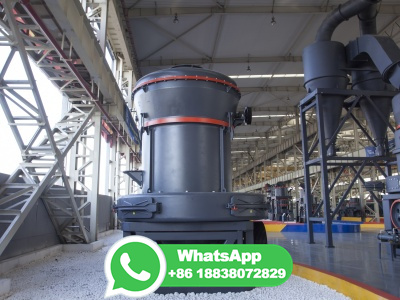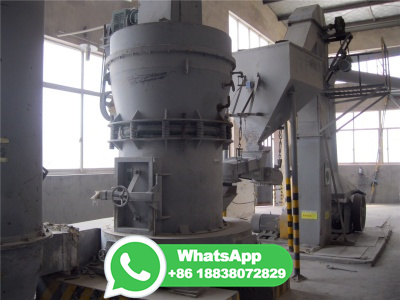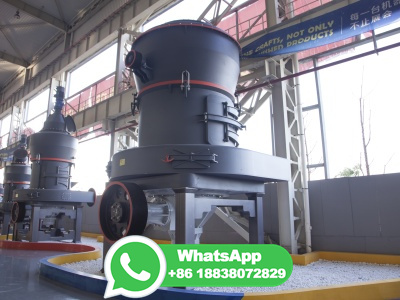
WEBAug 25, 2023 · At present, the Bayer process, which was named after Karl Josef Bayer who developed and patented at 1889–1892, is the world's principal method for alumina production from bauxite [20,21,22]. A schematic diagram of Bayer process is shown in Fig. 4. The digestion temperature of bauxite in caustic solution strongly depends on the .
WhatsApp: +86 18203695377
WEBAluminium smelting is the process of extracting aluminium from its oxide, alumina, generally by the HallHéroult is extracted from the ore bauxite by means of the Bayer process at an alumina refinery.. This is an electrolytic process, so an aluminium smelter uses huge amounts of electric power; smelters tend to be loed .
WhatsApp: +86 18203695377
WEBFeb 2, 2024 · Ion Exchange Method. The most widely used method for extracting gallium from Bayer's solution is ion exchange [].The ion exchange process includes adsorption, leaching of saturated resin and transformation of lean resin with dilute lye [].The seed mother liquid was first clarified by a storage tank, the temperature was lowered to 40 ℃, .
WhatsApp: +86 18203695377
WEBMay 8, 2014 · The bauxite ore contains aluminum trihydrate (Al (OH) 3 ). Alumina refining produces alumina (Al 2 O 3) from the bauxite ore, by exploiting the reversible reaction of the Bayer process 1–3 : The reaction is firstly driven in the sodium aluminate (NaAlO 2) direction by the addition of caustic soda (NaOH) to bauxite.
WhatsApp: +86 18203695377
WEBJul 12, 2019 · Introduction. Aluminum is too high in the electrochemical series (reactivity series) to extract it from its ore using carbon reduction. The temperatures needed are too high to be economic. Instead, it is extracted by electrolysis. The ore is first converted into pure aluminum oxide by the Bayer Process, and this is then electrolyzed in solution in .
WhatsApp: +86 18203695377
WEBAlumina Refining. Alumina is a white granular material, a little finer than table salt, and is properly called aluminium oxide. Aluminium does not occur as a metal but must first be refined from bauxite into alumina. Approximately two tonnes of alumina are required to produce one tonne of aluminium. Australia is the second largest producer of ...
WhatsApp: +86 18203695377
WEBThe Bayer process: How alumina is produced from bauxite. ... History of the Bayer process. The Bayer process was invented in 1887 by Carl Josef Bayer. The Austrian chemist sought to develop a method for supplying alumina to the textile industry (for use as a mordant, a substance that combines with a dye and thereby sets the color in a material
WhatsApp: +86 18203695377
WEBBauxite Waste as cement Substitute after Normalisation: Sustaining environment. Red mud, the bauxite residue is adiscarded materials producedfrom the Bayer's methodof production ofalumina. The ...
WhatsApp: +86 18203695377
WEBApr 1, 2015 · The bauxite is the main source of organics in the Bayer process (Xiao et al., 2007a, Xiao et al., 2007b, Ellis et al., 2002, McSweeney et al., 2011).In addition to organic compounds, there are inorganic materials such as sodium carbonate and sulfate, which are formed during the digestion either by dissolution of the salts or minerals or from .
WhatsApp: +86 18203695377
WEBJan 23, 2022 · The Bayer Process was patented in 1888 in Germany by the Austrian chemist, Karl Joseph Bayer [].The simple chemistry of the process is that the hydrated forms of aluminum in bauxite, readily dissolve in heated caustic (NaOH) solutions (the DIGESTION step, see Chap. 4).The advantage is that nearly all of the minerals in .
WhatsApp: +86 18203695377
WEBJun 5, 2024 · Complete answer: Bayer's method: In this method, bauxite powder is taken and concentrated (45%) and sodium hydroxide solution is added and then heated in a closed vessel at 433 K temperature and 5 to 6 bars of pressure, for 6 to 8 hours, so that aluminium oxide present in bauxite is converted into sodium aluminate which is soluble .
WhatsApp: +86 18203695377
WEBThe Bayer Process is the most commonly used method of obtaining alumina from bauxite, and is explored in detail here. The key input materials are the ores bauxite gibbsite, boehmite, or diaspore, caustic soda, and calcined lime. The global average consumption of these inputs is as follows: Raw Material. kg per tonne of alumina. .
WhatsApp: +86 18203695377
WEBThe Bayer process liquor cycle is a loop, and the goal is to ensure that the energy stays within the loop, with heat exchange occurring between different parts of the cycle. The diagram shown in Fig., provided by Donaldson, simplifying the Bayer process into a large heat exchanger, highlights this idea well. Wherever possible the heat is ...
WhatsApp: +86 18203695377
WEBJan 25, 2023 · The concentration of the Bauxite ore into alumina is done by Bayer's process. Alumina is then refined into pure aluminium metal through the Hall–Héroult electrolytic process. Aluminium is too high in the electrochemical series (reactivity series) to be extracted from its ore using carbon reduction.
WhatsApp: +86 18203695377
WEBNov 4, 2022 · The Bayer process, the production of pure aluminium oxide hydrate (or more chemically formulated aluminium hydroxide) from bauxite, and the calcination process, the production of pure aluminium oxide from the aluminium oxide hydrate. However, these two processes are often combined in books and the media and referred .
WhatsApp: +86 18203695377
WEBMined bauxite ore is refined into alumina through what is known as the Bayer process. The process, discovered in 1887, extracts alumina from bauxite through crushing, dissolving it in caustic soda, filtration and an electrolytic process. Alumina is a white powder, appearing similar to table salt, which can then be smelted into aluminium metal.
WhatsApp: +86 18203695377
WEBThe ore is first converted into pure aluminium oxide by the Bayer Process, and this is then electrolysed in solution in molten cryolite another aluminium compound. The aluminium oxide has too high a melting point to electrolyse on its own. Aluminium ore. The usual aluminium ore is bauxite. Bauxite is essentially an impure aluminium oxide.
WhatsApp: +86 18203695377
WEBMar 1, 2013 · Summary This chapter contains sections titled: Introduction The Phase Diagram of the system Na2OAl2O3H2O Bayer Process Alumina Yields Conclusions
WhatsApp: +86 18203695377
WEBAll Australian alumina refineries use the Bayer Process to extract alumina from bauxite. Inputs typically include caustic soda, energy in the form of gas or coal (to produce the required heat and steam for the process), flocculants (to assist the sedimentation process), and water (to recover the caustic soda for reuse).
WhatsApp: +86 18203695377
WEBJan 29, 2020 · More than 85% of the bauxite mined globally is converted to alumina for the production of aluminium metal. An additional 10% goes to nonmetal uses in various forms of specialty alumina, while the remainder is used for nonmetallurgical bauxite appliions. Nonmetallurgical bauxite is used in: calcined products.
WhatsApp: +86 18203695377
WEBJan 1, 2014 · The Bayer process is basically used for the extraction of aluminum hydrate from the bauxite ores with the mass ratio of alumina to silica (A/S) above 9. The sinter process is widely used to process the poorgrade diasporic bauxite ores with A/S below 7, in China and Russia, by sintering the bauxite ore with sodium carbonate and limestone .
WhatsApp: +86 18203695377
WEBJan 1, 2011 · The Bayer alumina refinery. The Bayer process, illustrated in Fig., currently dominates world alumina production and remains little changed from the original concepts of Karl Bayer. Starting with a gibbsite rich bauxite feed, there are four distinct stages to this process: • Digestion • Clarifiion • Precipitation • Calcination.
WhatsApp: +86 18203695377![The Bayer process [44]. | Download Scientific Diagram](/kd8ezfh/338.jpg)
WEBThe Bayer process is a standard technique used by industries to extract aluminum and alumina from bauxite, as shown in Figure 6. The bauxite has 1030 wt.% Fe 2 O 3, 48 wt.% SiO 2, and 25 wt ...
WhatsApp: +86 18203695377